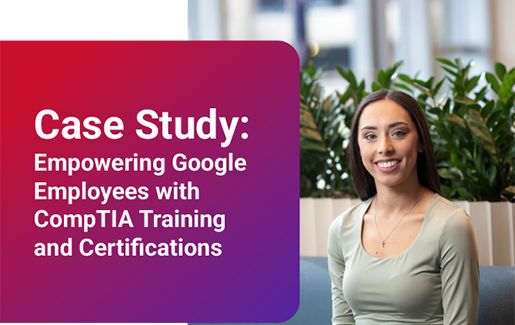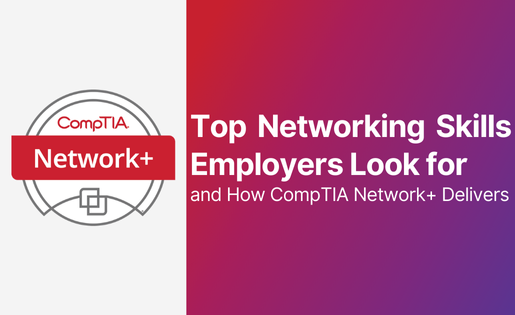CompTIA helps you get the tech career you deserve with industry-leading certifications, courses and expert knowledge.
CompTIA is the world's most trusted certifying body of IT professionals.
About CompTIASelf-study, virtual classes, interactive labs, practice exams & more!
Explore Training





CompTIA’s State of the Tech Workforce is the definitive guide to tech workforce trends, the number of available jobs in technology, and tech industry employment statistics by state, metro area and nationwide.
.png?sfvrsn=355ea2f9_0)
Discover the latest IT industry trends and insights with CompTIA. Learn more about careers in IT, emerging trends and the business of IT.

Plan Your Next Move with CompTIA's IT career path planning tool.

Discover everything you need to know about data analytics with this ultimate guide. Get started on your data analytics career today.

Discover how Google leverages CompTIA certifications to upskill employees, bridge IT skill gaps, and drive enterprise workforce development.
Apr 1, 2025, 18:54 PM by CompTIA
.jpg?sfvrsn=7e0a61ab_2)
Discover how Utah is strengthening cybersecurity with CompTIA Security+ training—upskilling its workforce to protect public data and prevent cyber threats.
Mar 31, 2025, 13:00 PM by CompTIA

With the right skills and training, you can meet NIS2 Directive requirements, strengthen cybersecurity, ensure compliance, and build a resilient workforce.
Feb 17, 2025, 15:49 PM by CompTIA

CompTIA Network+ is a must-have for IT professionals. Learn why networking skills are essential and how this certification can advance your career.
Feb 14, 2025, 16:49 PM by CompTIA

Discover the top networking skills employers look for and how CompTIA Network+ delivers. Build the skills you need to succeed in IT.
Feb 7, 2025, 18:45 PM by CompTIA

Discover how the UK can close its cybersecurity skills gap with upskilling, global standards, and supply chain security to build a safer digital future.
Feb 4, 2025, 15:32 PM by CompTIA

CompTIA A+ helps you build resume-worthy IT skills. Learn how this certification prepares you for real-world IT roles and impresses employers.
Jan 31, 2025, 19:39 PM by CompTIA